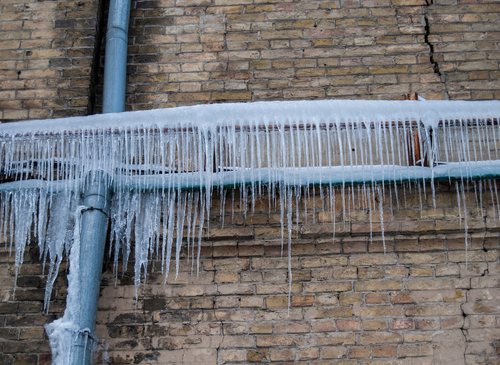Crucial Tips to Avoid Frozen Pipes in Cold Weather: Professional Guidance
Crucial Tips to Avoid Frozen Pipes in Cold Weather: Professional Guidance
Blog Article
Every person seems to have their own unique theory involving Preventing and dealing with frozen pipes.

Winter can wreak havoc on your pipes, especially by freezing pipelines. Below's how to avoid it from taking place and what to do if it does.
Intro
As temperature levels decline, the threat of icy pipelines rises, possibly causing expensive repair services and water damage. Comprehending just how to stop frozen pipelines is essential for property owners in chilly environments.
Comprehending Icy Pipelines
What creates pipelines to ice up?
Pipelines freeze when subjected to temperatures listed below 32 ° F (0 ° C) for prolonged periods. As water inside the pipelines freezes, it expands, taxing the pipe walls and possibly causing them to rupture.
Risks and problems
Frozen pipes can cause water system interruptions, property damages, and expensive repair work. Burst pipes can flood homes and create comprehensive architectural damage.
Signs of Frozen Pipes
Identifying icy pipelines early can prevent them from rupturing.
How to identify icy pipes
Seek decreased water circulation from faucets, uncommon odors or sounds from pipes, and noticeable frost on subjected pipelines.
Prevention Tips
Insulating vulnerable pipelines
Wrap pipes in insulation sleeves or utilize warmth tape to shield them from freezing temperatures. Concentrate on pipelines in unheated or exterior areas of the home.
Heating techniques
Keep interior rooms sufficiently heated, specifically locations with plumbing. Open up closet doors to permit warm air to distribute around pipelines under sinks.
Shielding Outdoor Plumbing
Yard hoses and outside faucets
Separate and drain pipes yard pipes before winter months. Mount frost-proof faucets or cover outside taps with shielded caps.
What to Do If Your Pipes Freeze
Immediate actions to take
If you suspect icy pipelines, keep taps open up to soothe stress as the ice thaws. Utilize a hairdryer or towels soaked in hot water to thaw pipelines slowly.
Long-Term Solutions
Architectural modifications
Take into consideration rerouting pipes far from exterior wall surfaces or unheated areas. Include added insulation to attics, basements, and crawl spaces.
Upgrading insulation
Invest in high-grade insulation for pipelines, attics, and walls. Appropriate insulation helps preserve regular temperatures and minimizes the threat of frozen pipelines.
Final thought
Avoiding icy pipelines calls for positive procedures and fast actions. By comprehending the reasons, signs, and preventive measures, house owners can secure their pipes during winter.
5 Ways to Prevent Frozen Pipes
Drain Outdoor Faucets and Disconnect Hoses
First, close the shut-off valve that controls the flow of water in the pipe to your outdoor faucet. Then, head outside to disconnect and drain your hose and open the outdoor faucet to allow the water to completely drain out of the line. Turn off the faucet when done. Finally, head back to the shut-off valve and drain the remaining water inside the pipe into a bucket or container. Additionally, if you have a home irrigation system, you should consider hiring an expert to clear the system of water each year.
Insulate Pipes
One of the best and most cost-effective methods for preventing frozen water pipes is to wrap your pipes with insulation. This is especially important for areas in your home that aren’t exposed to heat, such as an attic. We suggest using foam sleeves, which can typically be found at your local hardware store.
Keep Heat Running at 65
Your pipes are located inside your walls, and the temperature there is much colder than the rest of the house. To prevent your pipes from freezing, The Insurance Information Institute suggests that you keep your home heated to at least 65 degrees, even when traveling. You may want to invest in smart devices that can keep an eye on the temperature in your home while you’re away.
Leave Water Dripping
Moving water — even a small trickle — can prevent ice from forming inside your pipes. When freezing temps are imminent, start a drip of water from all faucets that serve exposed pipes. Leaving a few faucets running will also help relieve pressure inside the pipes and help prevent a rupture if the water inside freezes.
Open Cupboard Doors
Warm your kitchen and bathroom pipes by opening cupboards and vanities. You should also leave your interior doors ajar to help warm air circulate evenly throughout your home.

We were made aware of that write-up about Prevent Frozen Pipes through an associate on another site. Enjoyed our write up? Please quickly share it. Let someone else find it. Many thanks for taking the time to read it.
Call Today Report this page